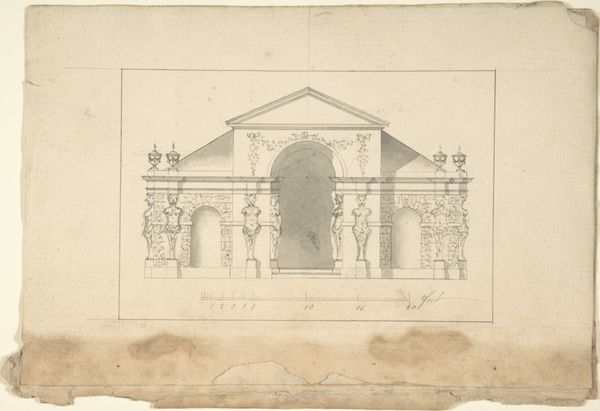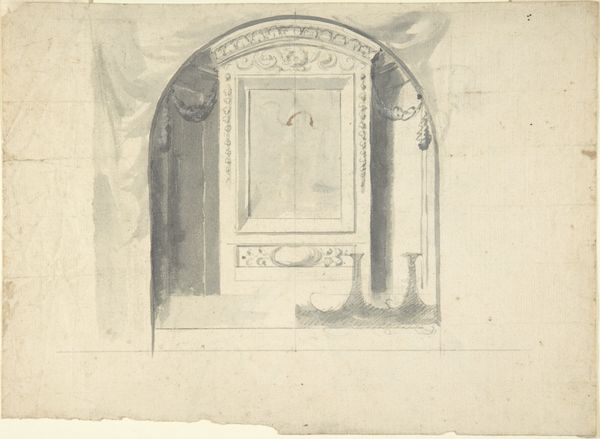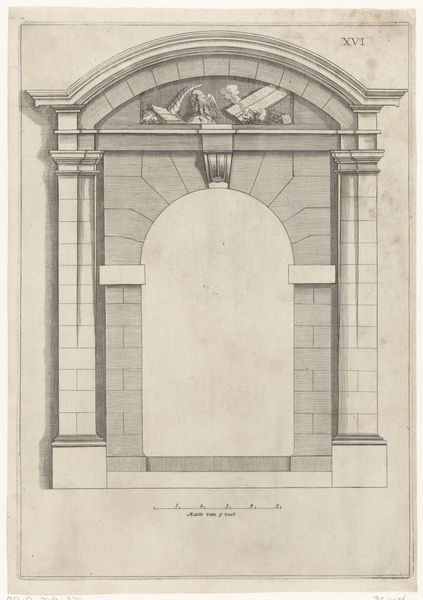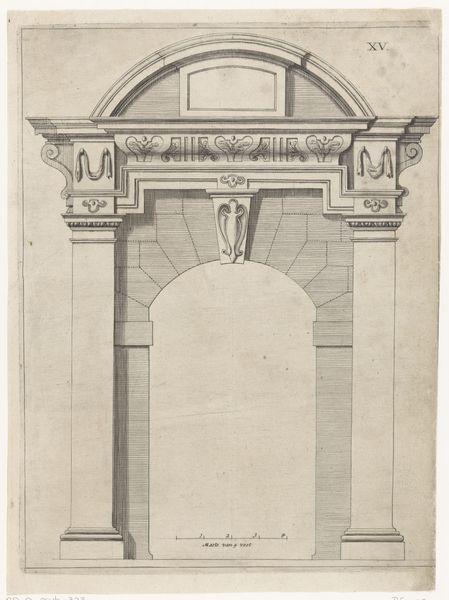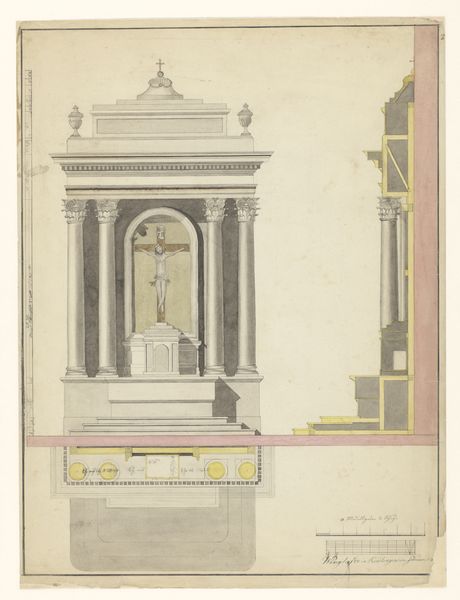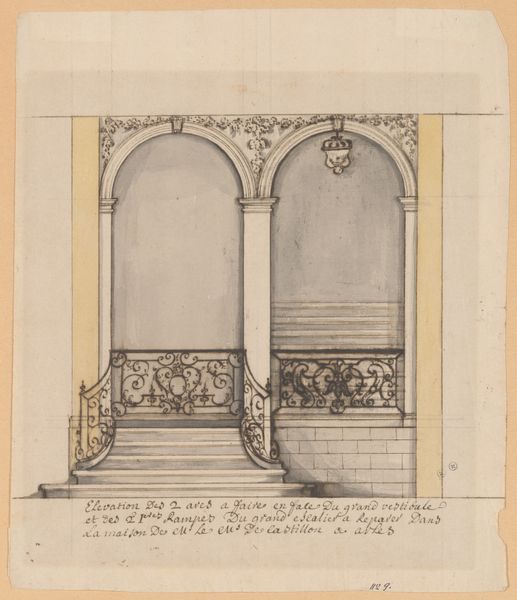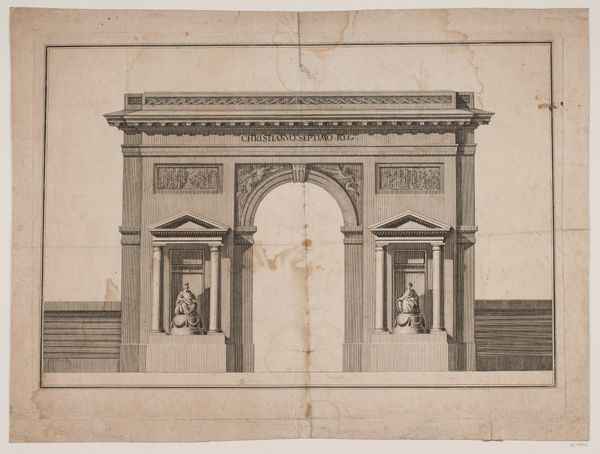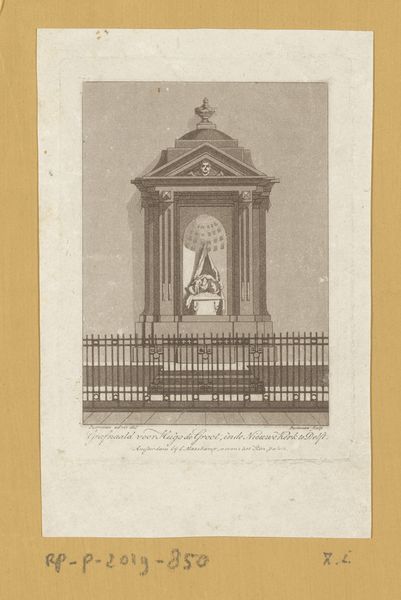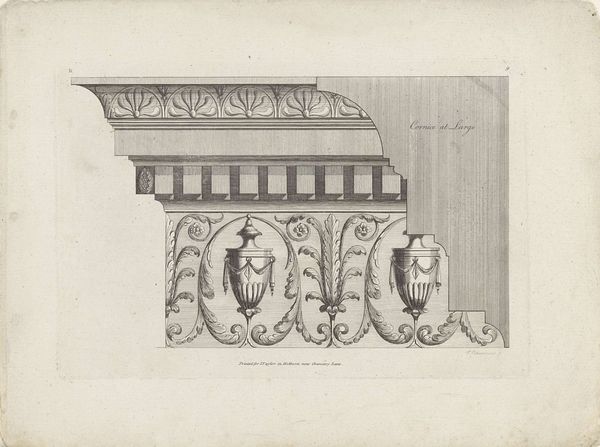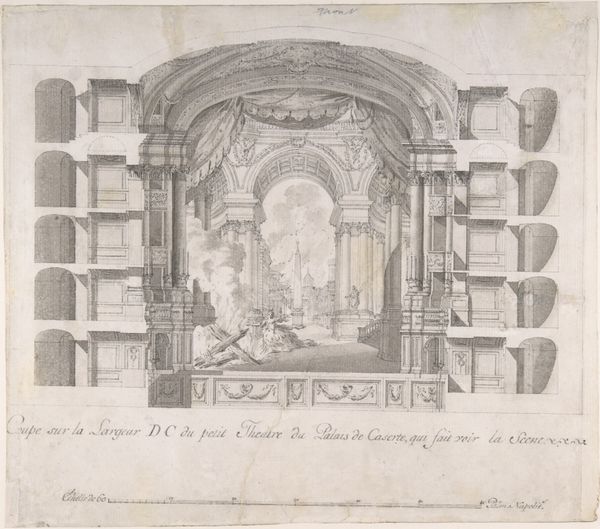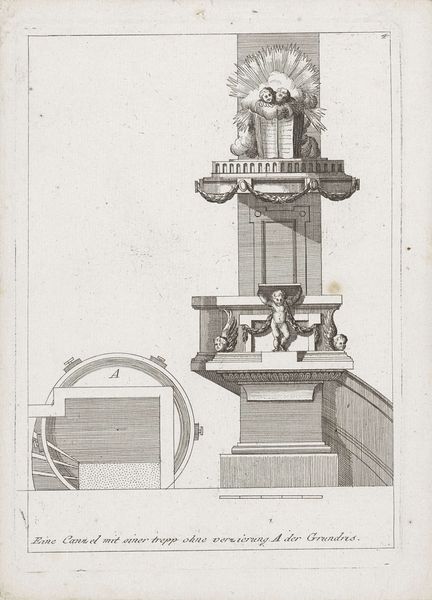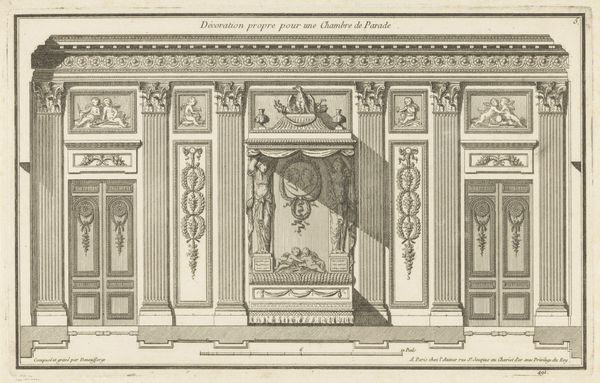
Ontwerp voor kamerversiering met tussen twee deuren een buste op een voet tussen twee urnen 1767 - 1823
0:00
0:00
drawing, pencil
#
portrait
#
drawing
#
neoclacissism
#
aged paper
#
toned paper
#
light pencil work
#
quirky sketch
#
landscape
#
form
#
personal sketchbook
#
historical fashion
#
sketchwork
#
geometric
#
pencil
#
sketchbook drawing
#
storyboard and sketchbook work
#
sketchbook art
Dimensions: height 214 mm, width 363 mm
Copyright: Rijks Museum: Open Domain
Editor: So, this is “Ontwerp voor kamerversiering met tussen twee deuren een buste op een voet tussen twee urnen,” a design for a room decoration made with pencil on toned paper, sometime between 1767 and 1823 by Abraham Meertens. It feels very symmetrical and...well, cold, almost. What do you see in this piece? Curator: Immediately, I notice the rigid formality. It echoes the Neoclassical obsession with order, control, and a harkening back to the perceived glory of the Roman Republic. But that coldness, as you say, stems perhaps from the drawing's function itself – a design, not a lived-in space. Editor: That makes sense. It's a proposal, not a reality. Curator: Exactly! Think about what the symbols communicate: the bust – a representation of virtue, the urns signifying remembrance. Everything speaks to a desire for permanence, for immortality. And consider the context: post-Enlightenment Europe searching for new foundations after societal upheaval. What values were they trying to project? Editor: I see it! The visual language reinforces the need for stability, and clear, rational thought. The very shapes of these architectural forms project that. Curator: Precisely. Even the muted tones of the pencil sketch speak to a sense of restraint and decorum. It's less about visual pleasure and more about communicating ideas. Notice how these classical objects are framed and contained within carefully balanced panels? Editor: Yes, it's like a stage set. And it makes me wonder about the stories they hoped to enact in a room like that. I'm starting to understand how the coldness has meaning, too! Curator: It speaks volumes, doesn't it? By understanding how historical symbols operate, we gain insight into not only the past but also what people wished it to be.
Comments
No comments
Be the first to comment and join the conversation on the ultimate creative platform.
